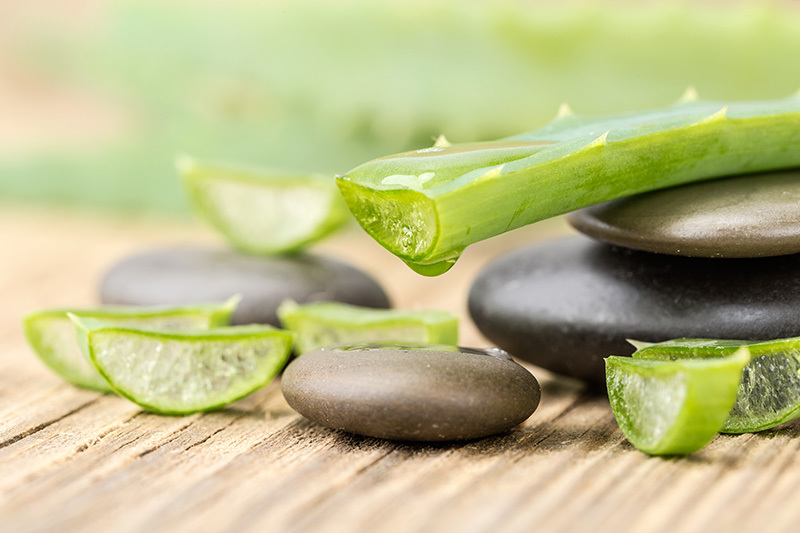Flourishing Orchids: Expert Tips and Tricks
Posted on 01/07/2025
Flourishing Orchids: Expert Tips and Tricks
Orchids have long captivated plant lovers with their exotic beauty, intricate blooms, and fascinating variety. If you're looking to master the art of nurturing flourishing orchids in your home or garden, you've come to the right place. This comprehensive guide provides professional advice, orchid care tips, and tricks to help your orchids thrive. Whether you're a beginner or a seasoned enthusiast, dive in and learn how to create the perfect environment for your spectacular blooms.

Understanding Orchids: A Brief Overview
Orchids belong to the Orchidaceae family, one of the largest and most diverse plant families in the world. With over 25,000 species and more than 100,000 hybrids, orchids flourish in nearly every climate except arctic regions. Their fascinating forms and vibrant colors make them a top choice for decorative plants. However, these elegant blooms require specific care to truly flourish.
- Over 25,000 natural orchid species
- Wide variety of colors, shapes, and sizes
- Habitat ranges from rainforests to mountainous regions
- Popular genera include Phalaenopsis (moth orchid), Cattleya, Dendrobium, and Vanda
Understanding your orchid's specific needs is key to ensuring healthy growth and abundant blooms.
Choosing the Right Orchid for Your Space
Not all orchids are created equal. Some varieties are easier to care for indoors, while others flourish in greenhouses or outdoor gardens. Consider the following orchid care tips when selecting your plant:
- Phalaenopsis Orchids (Moth Orchids) - Ideal for beginners, tolerant of indoor conditions
- Cattleya Orchids - Known for their fragrant, showy flowers, best in bright, indirect light
- Dendrobium Orchids - Require slightly cooler conditions and bright light
- Vanda Orchids - Prefer high humidity and light, often grown in baskets or mounted
Tip: Start with resilient species like Phalaenopsis if you are new to orchid cultivation!
Creating the Ideal Environment for Flourishing Orchids
1. Light: Getting the Right Exposure
Lighting is crucial for orchid care. Most varieties thrive in bright, indirect light. Direct sunlight can scorch leaves, while too little light hinders blooming.
- Windowsill Placement: East or west-facing windows offer optimal light.
- For south-facing windows, use sheer curtains to diffuse intense sun.
- If natural light is insufficient, supplement with grow lights designed for orchids.
Sort your orchids by light needs and rotate them regularly for uniform growth.
2. Temperature: Simulate Natural Conditions
Orchids flourish within specific temperature ranges:
- Daytime: 65-75?F (18-24?C)
- Nighttime: 55-65?F (13-18?C)
- Note: A slight drop in nighttime temperature encourages blooming, mimicking natural conditions.
Maintain a consistent temperature and avoid drafts or sudden changes, which can stress your plants.
3. Humidity: Embrace Moist Air
Orchids prefer humidity levels between 40-70%. Too little moisture leads to shriveled leaves, while too much increases the risk of fungal diseases.
- Group plants together to raise ambient moisture.
- Use a humidity tray or room humidifier.
- Mist leaves in the morning but avoid wetting the flowers directly.
4. Air Circulation: Keep the Air Moving
Good air circulation reduces disease and strengthens plants. Place fans nearby--on a low setting--to mimic natural breezes. Avoid blowing directly onto your orchids, as this can lead to dehydration.
- Position fans for gentle, indirect airflow.
- Open windows occasionally for fresh air (weather permitting).
Orchid Potting and Repotting: Foundations for Flourishing
1. Choosing the Best Orchid Potting Media
Unlike other houseplants, most orchids are epiphytes, growing on trees with their roots exposed. The right potting medium is essential for healthy root systems.
- Bark Mix: Excellent drainage and air flow; ideal for most orchids.
- Sphagnum Moss: Retains moisture but may need frequent changing to avoid decomposition.
- Coconut Husk Chips: Longer-lasting, offer similar advantages to bark.
- Perlite and Charcoal: Additives that improve drainage and maintain freshness.
Choose the medium that best suits your orchid variety and your local environment!
2. When and How to Repot Orchids
Repotting cycles are essential for flourishing orchids:
- Repot every 1-2 years, or when roots outgrow the pot or media breaks down.
- Repot after flowering, not during the blooming phase.
- Soak roots to soften them, gently remove old medium, and trim dead or rotten roots.
- Always use sterilized tools to prevent disease transfer.
Watering Orchids: The Art of Moisture Balance
1. How Often Should You Water Orchids?
Overwatering is the number one reason orchids fail to thrive. Conversely, under-watering causes dehydration. Finding the perfect balance is crucial for flourishing orchids.
- Water once a week during the growing season; less in winter.
- Allow potting mix to dry slightly between watering.
- Check roots: Healthy roots are firm and green or white when dry.
2. Watering Techniques
- Use room temperature, non-chlorinated water for best results.
- Water early in the day to avoid fungal issues overnight.
- Avoid letting water collect in the crown of the plant to prevent rot.
- Let water drain freely from the bottom of the pot.
Expert Fertilizing Tips for Evolving Orchids
1. Frequency and Type of Fertilizer
Orchids require regular, but not heavy, feeding:
- Use a balanced fertilizer (20-20-20) diluted to quarter strength.
- Fertilize every 2-4 weeks during the active growing season.
- Switch to bloom-boosting formulas (higher in phosphorus) when buds appear.
2. Avoid Over-fertilization
Excess fertilizer can burn roots and stunt growth. Every fourth watering, flush the potting medium with pure water to remove residue and avoid salt build-up.
Troubleshooting: Common Orchid Care Problems
1. Yellow Leaves
Yellowing may indicate overwatering, underwatering, aging leaves, or improper lighting. Assess root health and adjust care accordingly.
2. Leaf Spots and Pests
Common insect pests include mealybugs, scale, and aphids. Control outbreaks by:
- Isolating affected plants immediately
- Wiping leaves with a soapy solution or neem oil
- Removing severely damaged leaves
3. Lack of Blooms
If your orchid is not flowering:
- Increase light intensity but avoid direct sun.
- Ensure the temperature drops at night.
- Do not over-fertilize; rest periods are essential for bud formation.
Propagation: Multiply Your Flourishing Orchids
1. Division
When your orchid outgrows its pot, propagation by division is feasible, especially for sympodial species like Cattleya and Dendrobium:
- Divide plants during repotting, ensuring at least 3-4 pseudobulbs per division.
- Repot the divisions in fresh medium, keep in a humid environment until established.
2. Keiki Development
Keikis are baby plants that occasionally sprout on orchid stems. When roots appear, detach them and pot individually to cultivate new flourishing orchids.
Seasonal Orchid Care Tips
Spring/Summer
- Increase watering frequency and humidity.
- Fertilize regularly as orchid growth accelerates.
- Protect from intense midday sun.
Autumn/Winter
- Reduce watering; allow the plant to rest.
- Maintain night temperature drops to encourage blooming.
- Adjust artificial lighting to compensate for shorter days.

Frequently Asked Questions About Flourishing Orchids
Q: How do I know when to water my orchid?
Inspect the roots and potting medium. If roots look silvery and the top inch of media is dry, it's time to water. Avoid rigid schedules--respond to your plant's actual needs.
Q: My orchid's leaves are wrinkled--what's wrong?
This is often a sign of dehydration or root issues. Check roots for rot and adjust your watering practices.
Q: Can I use tap water for my orchids?
Many municipal water supplies are high in minerals and chlorine, which can damage orchids over time. Use rainwater, distilled, or filtered water when possible.
Q: How long do flourishing orchids bloom?
With proper care, moth orchids (Phalaenopsis) can bloom for up to three months! Some varieties bloom several times a year, rewarding dedicated gardeners with long-lasting displays.
Final Thoughts: Your Path to Flourishing Orchids
Growing flourishing orchids is an immensely rewarding experience. By providing the right balance of light, water, humidity, and nutrients, your orchids will not only survive--they will thrive and reward you with exquisite blooms year after year. Patience, observation, and a willingness to adapt are the true secrets to orchid success.
- Keep learning: Every orchid is unique--adjust your care routine based on observations.
- Join local orchid societies and online forums for support and inspiration.
- Experiment with species to discover your favorites.
- Enjoy the journey as your orchids flourish under your expert care!
For more detailed care guides, orchid tips and tricks, and expert advice for flourishing orchids, bookmark this article and share it with fellow plant lovers. Here's to your success in cultivating thriving, beautiful orchids!
Latest Posts
Ensure Your Poinsettias Flourish Beyond the Holidays
Unveiling Tricks to Enhance Poinsettia Longevity
Ultimate Guide to Low Maintenance Office Plants







